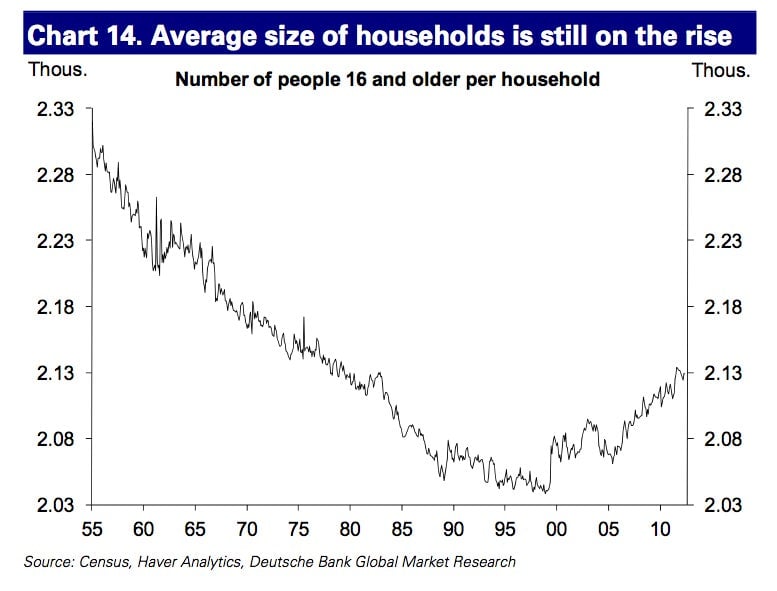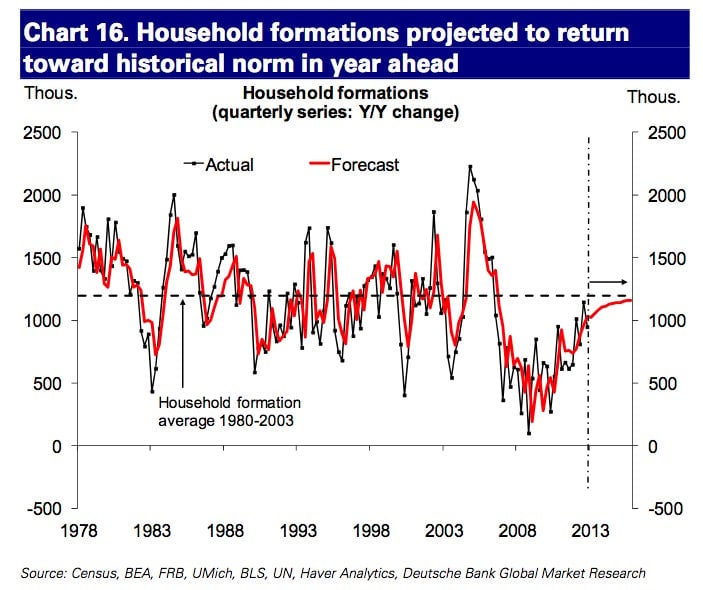Check out all the young Americans stuck living with their parents
The aftermath of the great recession continues to confound newly minted American college graduates, forcing many to return to the stuffed-animal-filled bedrooms of their childhood to wait for that job offer.

The aftermath of the great recession continues to confound newly minted American college graduates, forcing many to return to the stuffed-animal-filled bedrooms of their childhood to wait for that job offer.
This Deutsche Bank chart presents a crisp image of the trend over the last few years. It shows the average number of people aged 16 or older per US household.

Basically this chart is giving you a window into what economists like to call “household formation,” or perhaps we should say, the lack thereof. In other words, younger people haven’t been forming their own households. The good news is this is starting to change.

There’s no secret why things are turning around. It’s improvements in the US job market. But this isn’t just good news for those young people who don’t want to watch Antiques Roadshow with mom and dad anymore. Household formation—which is highly correlated with baby formation, something else in which America is distinctly lacking right now—is important to a range of industries, not the least of which is homebuilding.
In fact, Stuart Miller, chief executive of US homebuilder Lennar Corp., told analysts on his company’s post-earnings conference call that the wave of young people flowing from parental homes “is just the beginning of the recovery as single-family starts come off their lows at just under 600,000 compared to the 50-year household formation average of 1.25 million households per year. Recent years’ low housing starts and household formations have created a large pent-up demand of homebuyers who started reentering the housing market in 2012 and are likely to continue to do so into 2013 and beyond.”